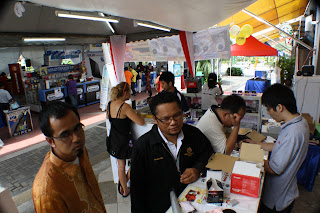Retainer (orthodontics)
Orthodontic retainers are custom-made devices, made usually of wires or clear plastic, that hold teeth in position after surgery or any method of realigning teeth. They are most often used before or after dental braces to hold teeth in position while assisting the adjustment of the surrounding gums to changes in the bone. Most patients are required to wear their retainer(s) every night at first, with many also being directed to wear them during the day - at least initially. There are three types of retainers typically prescribed by orthodontists and dentists: Hawley, Essix, and Bonded (Fixed) retainers.
Hawley retainer
 Recently, a more aesthetic version of the Hawley retainer has been developed. For this alternative, the front metal wire is replaced with a clear wire called the ASTICS. This retainer is intended to be adjustable in a similar manner to the traditional Hawley retainer, which is not practical with vacuum-formed retainers.
Recently, a more aesthetic version of the Hawley retainer has been developed. For this alternative, the front metal wire is replaced with a clear wire called the ASTICS. This retainer is intended to be adjustable in a similar manner to the traditional Hawley retainer, which is not practical with vacuum-formed retainers.Vacuum-formed (Essix) retainer
Another common type is the vacuum formed retainer (VFR). This is a polypropylene or polyvinylchloride (PVC) material, typically .020" or .030" thick. Essix is a brand name many dental offices are familiar with. This clear or transparent retainer fits over the entire arch of teeth or only from canine to canine (clip on retainer) and is produced from a mold. It is similar in appearance to Invisalign trays, though the latter are not considered "retainers". VFRs, if worn 24 hours per day, do not allow the upper and lower teeth to touch because plastic covers the chewing surfaces of the teeth. Some orthodontists feel that it is important for the top and bottom chewing surfaces to meet to allow for "favorable settling" to occur. VFRs are less expensive, less conspicuous, and easier to wear than Hawley retainers. However, for patients with disorders such as Bruxism, VFRs are prone to rapid breakage and deterioration, especially if the material is PVC, a short chain molecule. This breaks down swiftly as compared to polypropylene, a long chain molecule.Most removable retainers are supplied with a retainer case for protection. During the first few days of retainer use, many people experience extra saliva in their mouth. This is natural and is due to the presence of a new object inside the mouth and consequent stimulation of the salivary glands. It may be difficult to speak for a while after getting a retainer, but this speech difficulty should go away over time as one gets used to wearing it.
Fixed retainers
An entirely different category of orthodontic retainers are fixed retainers. A fixed retainer typically consists of a passive wire bonded to the tongue-side of the (usually, depending on the patient's bite, only lower) incisors. Unlike the previously-mentioned retainer types, fixed retainers cannot be removed by the patient. Some doctors prescribe fixed retainers regularly, especially where active orthodontic treatments have effected great changes in the bite and there is a high risk for reversal of these changes. While the device is usually required until a year after wisdom teeth have been extracted it is often kept in place for life. Fixed retainers may lead to tartar build-up or gingivitis due to the difficulty of flossing while wearing these retainers. As with dental braces, patients often must use floss threaders to pass dental floss through the small space between the retainer and the teeth.






















